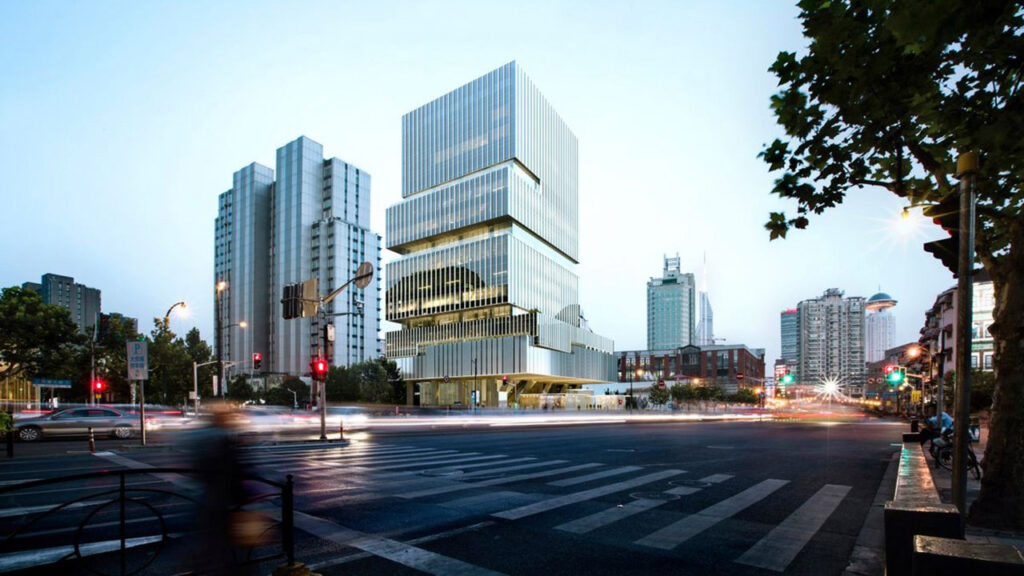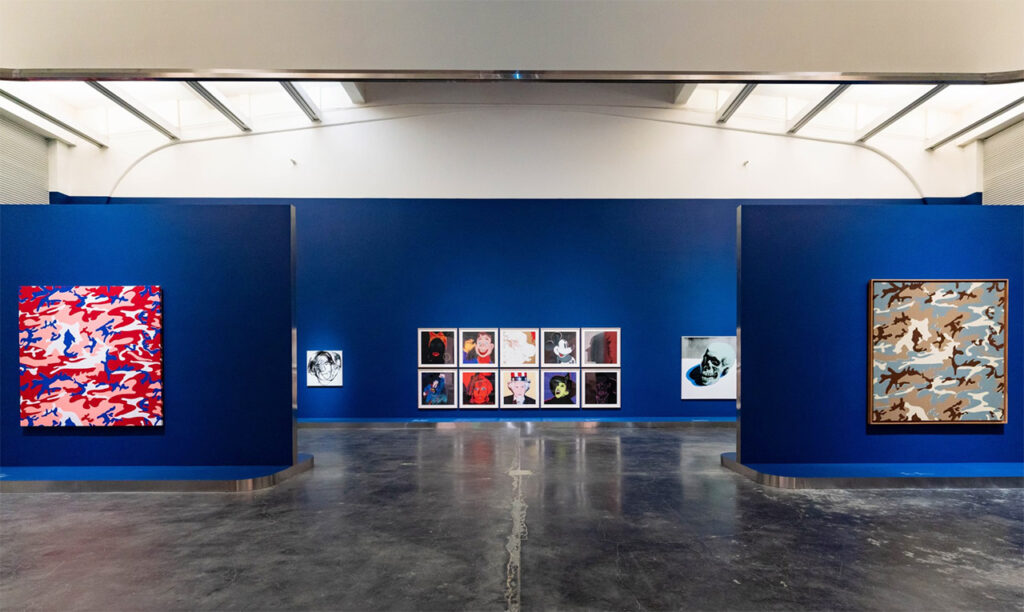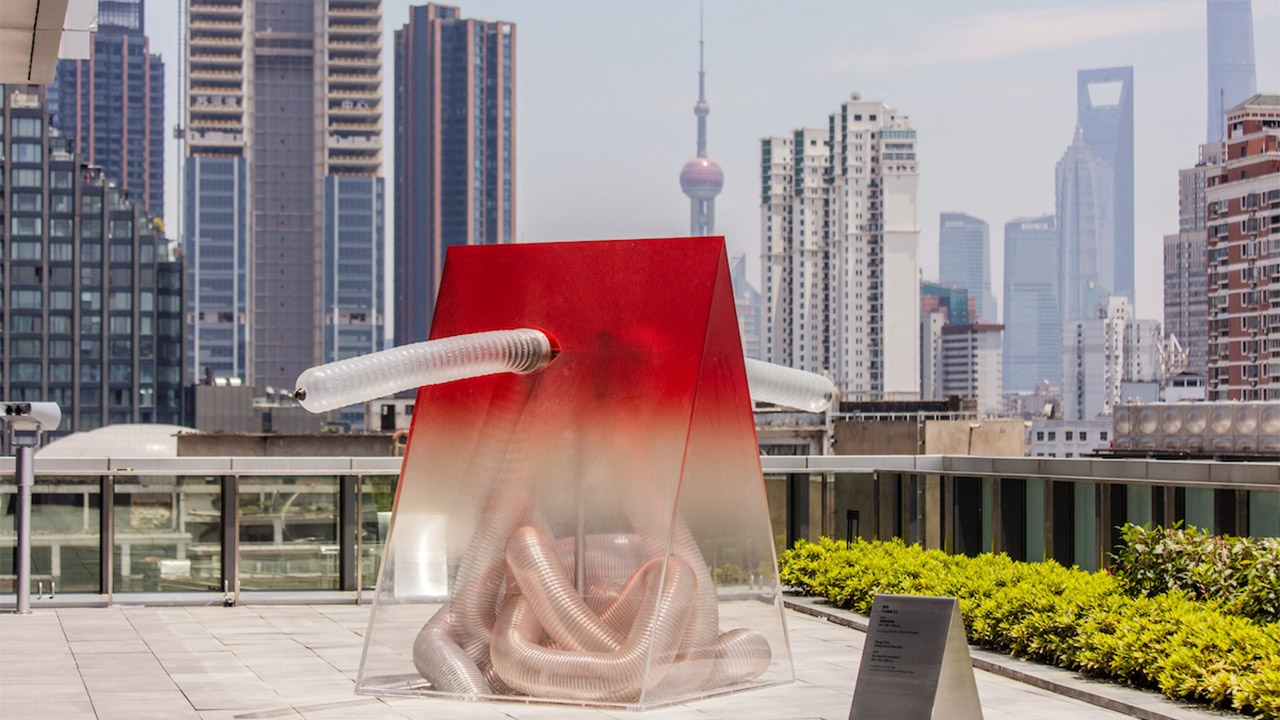When one thinks of the satellite museums embodying the art world’s enterprising globalism, the names Guggenheim and Pompidou naturally surface. But despite the China ambitions of these organizations — the French institution arrived on Shanghai’s Bund in late 2019 — it’s the Beijing-native UCCA Center for Contemporary Art that’s most aggressively pursuing the satellite model for a population rapidly discovering a penchant for modern art as leisure.
Long-rooted in the capital’s 798 Arts District, the original epicenter of China’s contemporary art scene, UCCA first branched out in 2018 with Dune, a cosy nook amid the sands of the northern seaside town Beidaihe that specializes in conceptual art. Now, it’s courting Shanghai with UCCA Edge and joining an emerging cluster of downtown art institutions that includes MoCA Shanghai and the Rockbund Art Museum. Its arrival in the country’s most international and dynamic art scene is at once a statement of ambition, and an exercise in financial muscle and branding power.

UCCA Edge, the museum’s third space, expands its reach into two of China’s major metropolitan areas. Image: UCCA
Fittingly, UCCA Edge’s opening exhibition casts attention on the early 2000s and the years in which Shanghai emerged as a global art center. But beyond spotlighting local talent and concerns, the museum will share exhibitions and resources with Beijing. First up is Becoming Andy Warhol, China’s most comprehensive exhibition on the icon to date, which is set to arrive from the capital in November.
The goal is to expand the reach of UCCA’s work and harness Shanghai’s unique artistic landscape, as curator Ara Qiu explained in an hour-long conversation with Aishan Zhang, Director of Media Strategy and Communications at Museum 2050, a platform facilitating dialogue on the outlook and development of China’s cultural sector. This talk was part of Museum 2050’s Dispatch Live series.
How do you feel Shanghai’s art environment has changed in recent years?
It’s definitely become more diverse, both in quantity and quality, and there’s also been a big improvement in the audience. Going to an art exhibition on weekends or in one’s spare time has become natural. An atmosphere has been created by many art institutions in recent years to cultivate this habit by hosting exhibitions that in turn educate audiences.
How do you see Shanghai art museums differentiating themselves, particularly in terms of integrating technology?
The standard of exhibiting artists [in Shanghai] is getting higher and almost matches the world’s leading museums with exhibitions from the very biggest international artists. In terms of technology, China is quite developed and people’s usage is very high. This means presenting multi-platform and multimedia exhibitions is natural, something audiences readily accept. You can see this in the integration of VR and AR, the online viewing of exhibitions, and the usage of QR codes to participate in events.
UCCA is offering a new operation model for museums in China. What are the advantages?
One advantage is that you can deliver valuable content to more places and bring in more audiences. Except for people who are inside the world of art, very few are willing to travel to another city specifically for an exhibition. For example, we have opened an Andy Warhol exhibition in Beijing that will travel to Shanghai in November and in Shanghai, it will bring in audiences in the Yangtze River Delta.

Becoming Andy Warhol at UCCA Beijing — the most comprehensive exhibition of the pop artist to be staged in China to date. Image: UCCA
What will be the differences between the Warhol exhibition in Beijing and Shanghai?
The spaces are different. Beijing is an industrial space with high ceilings; it’s very open and the audience is often surrounded by the work. [Shanghai] is on the third floor of an office building and though the total area is about the same as the large exhibition hall in Beijing, each room will be relatively smaller. It’s also in downtown Shanghai, so the feel of the space is quite different. We are currently in discussion with designers to see how we can best use the space in Shanghai to present Warhol. It’s a work in progress.
When it comes to international artists being exhibited in China, how do you think about localization?
I think it’s vital to have empathy with the audience and to build a bridge between audience and exhibition. Most people only know a few of the most famous artists and we need to localize the content, to do the work of interpretation without being condescending. We shouldn’t think of art museums as universities and ourselves as teachers; we need to have a service mentality and hope more audiences can understand the exhibition, and love the artist and the works of art. So we can do detailed work from writing wall text to organizing the exhibition flow to creating the preface, but in the end, the ordinary audience must be able to understand and be attracted.
What’s your curatorial vision for the coming five to 10 years?
On a personal level, I lean towards the work of female artists and I really hope to welcome solo exhibitions from female artists in the next few years. We have recently welcomed two international curators into our team and I believe they will bring new resources, curatorial depth, and professionalism. The most important aspect of art is its core, the thoughts and emotions it expresses. In terms of media and methods, anything is possible.
Additional reporting by Kaiyue Zhang



